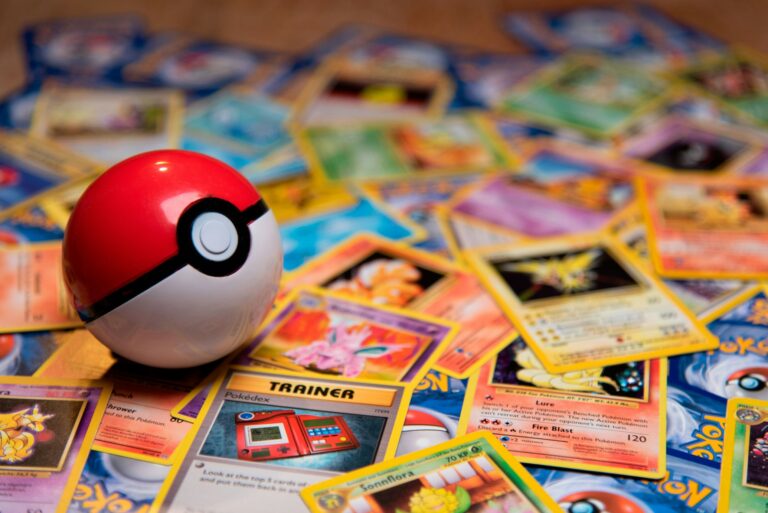

As long as mass media is present, they have helped create and fuel big madness, surge in celebrities, all sorts of pop culture nerds. It not only helps to reflect, but also shape, culture through newspaper ads, radio, television broadcasts, or online marketing. The existence of social media means that consumers can have a voice and turn the concept of pop culture into their heads. The Internet is eroding some of the power of traditional media outlet tastemaking. Information can be spread all over the world. Pop culture has returned to its simplest meaning. It’s something that most people think they love.
Pop culture collection is nothing new. In fact, it has been a popular hobby for decades, with enthusiasts stocking everything from trading cards to action figures and movie posters. The most iconic and valuable pieces are made from the simplest and cheapest materials. For example, Funko Pops is made up primarily of PVC, so it can withstand difficult and rough play. You don’t need to be a pop culture collector to understand why this old-fashioned hobby continues to grow and attract younger generations. If not impossible, it can be difficult to predict changes in public preferences and changes in popularity.
Collecting pop culture is a hobby as a child, but for others it is a lifelong pursuit.
Collecting children’s behaviors often begins at age 6-8. That’s when they began to understand logic and use it in their decisions about their surroundings and experiences. Often, children collect pop culture items to escape boredom, satisfy their passions and distinguish them from others. Some children have multiple collections. Almost every girl collects dolls, while boys collect baseball cards. You can collect books, especially if they are part of a series. Collecting provides emotional comfort and security. Young people add to their collection and feel like they’ve added their value.
Pop culture gathering appears to have become a common phenomenon where people of all ages do it. It’s not unusual or complicated. People who surfed the first wave Pokemania are prioritized to get the original lineup, so they hunt to collect rare variations of classic Pokémon Pop. Pokemon are now transcending generations. The first children with Pikachu lunch boxes are becoming parents, so younger children can play old games with their parents. As more and more things are created, everything becomes collectible. Of course, riding this whimsical market wave is difficult for first time collectors.
But at the heart of the pop culture gathering is the story of how you get what you can collect.
The physical objects in the collection help people express their identity. The items they decide to collect reflect their personality, interests and values and serve as a way to convey their personality. We are all the same, but still very different. Communities are the heart of pop culture groups. Individuals can share a love of common interest. If you spend money on entertainment memorabilia, you can also buy something that will make you smile, whether it’s a Star Wars sweater or a Harry Potter mini backpack.
Some people love the thrill of chasing. Overcoming obstacles can provide a sense of accomplishment, and the thrill of pursuing rare or difficult-to-find items is exhilarating. The smaller the number of specific collectibles that exist, the more difficult it will be to find. Even if items are not inherently uncommon, high demand can be difficult to find. For example, Jamie Lannister’s Freddie Funko’s Pop is a rare vinyl figurine made for the 2013 San Diego Comic-Con. Twelve shiny figurines have been released, and prices are outrageous. Now, imagine what it would be like to get that kind of fanko pop.
For brands and retailers, this offers a great opportunity to unlock success
Most people are self-proclaimed collectors, so why collect pop culture items accurately? Maybe it’s nostalgia. It goes beyond the content we consume and affects the way we dress, talk and interact with the world around us. Traveling down memory lanes can help you navigate periods of stress, loneliness, or transition. For some, collectibles may be ordinary objects, but for fandom it is the heart of boundaries and fanatic tastes. It can take decades for some franchises to affect today’s climate. Every aspect must be well thought out to bring joy from start to finish and inspire its cult following.
The Hyperengagement Group of Fans is valuable. Consumers who support movie franchises, video games, television shows, musicians, or sports teams will follow interests and hobbies across the platform, fostering engagement online and offline. Fandom is a real opportunity for brands and retailers, but only if you understand and respect the impact. Fandom is a diverse community and people say their favorite music, films, celebrities and more are important to their identity. They are interested in participating in fan practices, traveling to places featured in pop culture and purchasing products that have a positive impact on their mental health.
Why collect pop culture into obsessive/addictedness?
Collecting pop culture can easily get out of hand and take over your life. Reviewing movies and comic books is not at least the same, and you can’t retake your first experience. Still, you collect in the hope that it will. Over time, you grab some of those initial feelings, but the end result is a shame. Obsessive collection can lead to financial distress, social isolation and other negative outcomes. Look back at your situation honestly. You can enjoy your hobbies without losing sight of what’s most important.
Being balanced is beneficial for your mental health. Engaging in a variety of activities gives you a variety of perspectives and allows you to develop tunnel visions with your main hobbies. If you really love pop culture, play with your friend’s LEGO set or try out the 90s Trivia game. Explore yourself (and your talent) while alleviating your anxiety.


